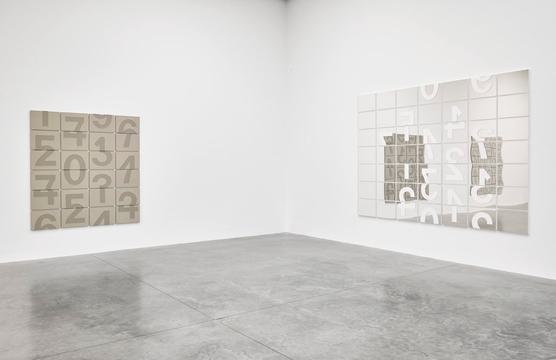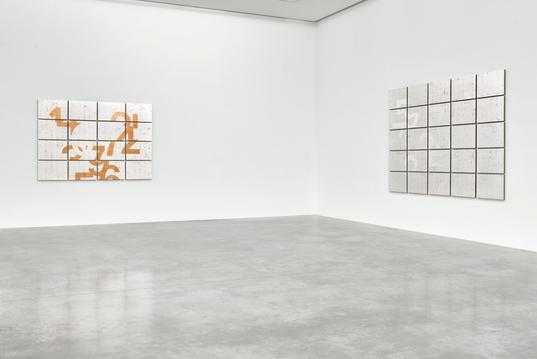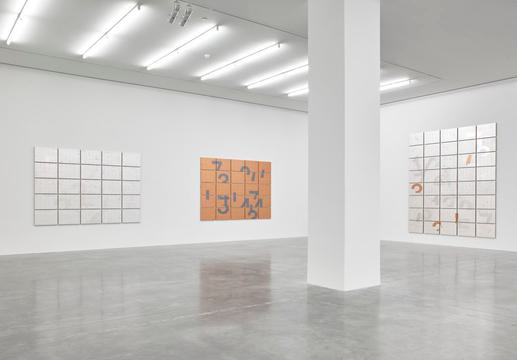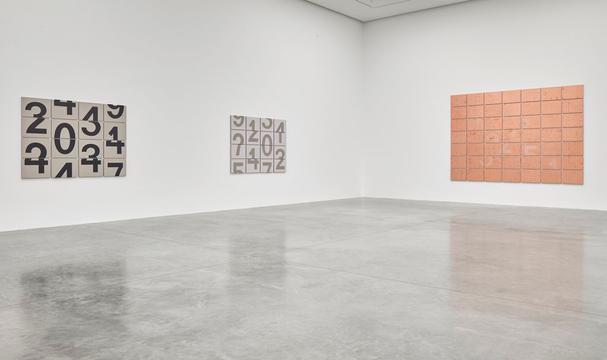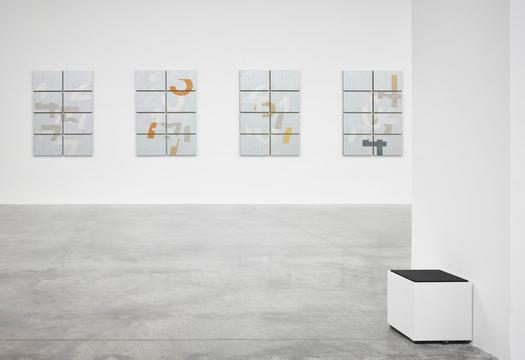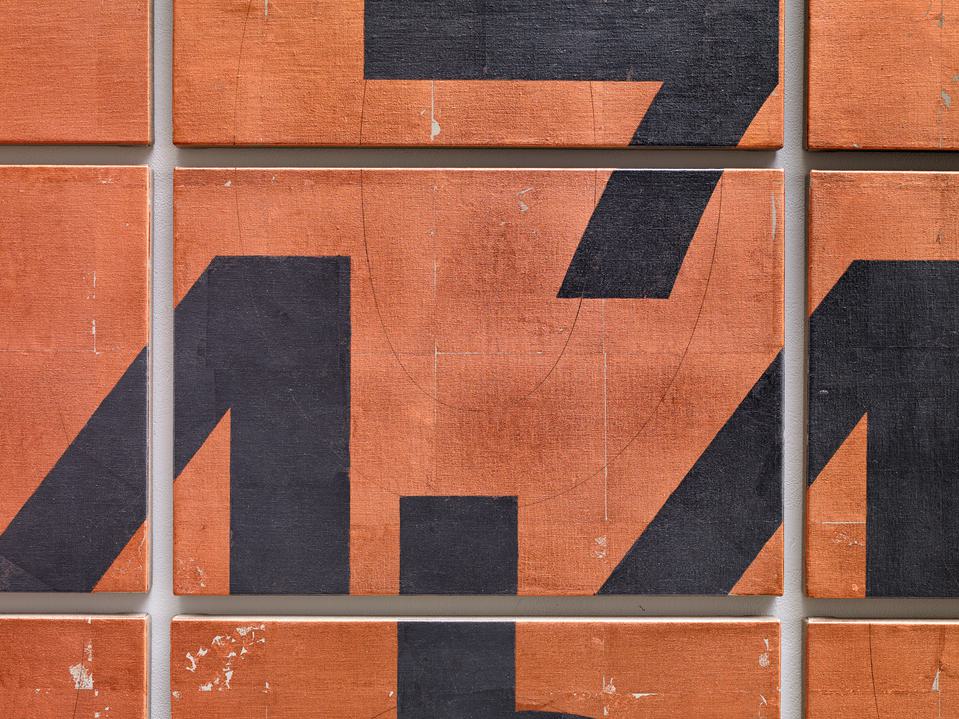
Time Will Tell
Darren Almond
Time Will Tell
28 November 2018 – 20 January 2019
Dates
28 November 2018 – 20 January 2019
‘What we have here is an orchestration of thematics, such that everywhere one looks, a poetics of the systematic reappears, rephrased – and the viewer is emphatically within it; it's an environment.’
Focusing on the idea of time and how it is articulated through the language of numbers, he draws attention to the way time can frame, structure and inform our understanding of the world.
While time is a theoretical abstraction it is also a concrete reality within human culture, one that is always rooted in relativity. Almond’s new series of paintings respond to this notion and to the idea that numbers are the only ‘true common language’. The basis of most organising systems, numbers are a primary determinant of human experience. Used to visualise the invisible, they not only quantify time, but enable scaling and mapping, are the language of economics, the tools of computer coding and the way to describe galactic schema too large for words alone.
Consisting of a grid formed from rectangular panels, the paintings depict fragmented digits in a utilitarian font, such as are found in the urban landscape – typically in and around transport hubs, in their signage, timetables and clocks. The compositions become a field of partial forms that appear to float across the surface of the paintings, emerging and disappearing, allowing the viewer’s awareness to drift between the figurative presence of the numbers and a space which opens onto the unconscious. In some, two halves of a single number are split across panels, in others, a complete zero is depicted either as a defined shape or as a barely visible trace, acting as the painting’s fulcrum and off-setting the works formal geometry. For Almond, the zero represents the ‘nothing that holds everything together’: a visual aperture and a focal point that unites a progressive structure.
The paintings are executed using varied media and techniques, including a concrete based-mineral paint, acrylic gel on mirror, or multiple layers of conductive metal leaf, such as copper, silver or palladium. The fissured appearance of the metal leaf paintings create their own changing topography: a delicate, physical surface that seems to absorb and reflect light in equal measure. This revealing and disappearing of forms serves to remind us of the continual depletion of these natural resources.
For a new sound piece, Almond was granted access to the Royal Observatory Greenwich, London, to record the working mechanics of the three 18th-century marine timekeepers, designed and built by John Harrison (c.1693-1776). These fully functioning prototypes proved that timekeepers could help mariners determine their longitude at sea and inspired the subsequent development of the marine chronometer. In an ode to John Cage, the recordings are played simultaneously for 4 minutes 33 seconds throughout all the galleries, followed by a period of silence of the same duration, creating a melodic, circadian soundtrack that echoes the overlapping visual iconography explored in the paintings. The exhibition also includes ‘Train Plates’, an ongoing series which expands the tradition of metal and alloy naming plaques that are assigned to British locomotives.

Darren Almond
Visit Artist PageCreate an Account
To view available artworks and access prices.
